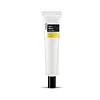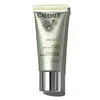What's inside
What's inside
 Key Ingredients
Key Ingredients

 Benefits
Benefits

 Concerns
Concerns

 Ingredients Side-by-side
Ingredients Side-by-side

Water
Skin ConditioningCaprylic/Capric Triglyceride
MaskingButylene Glycol
HumectantParaffinum Liquidum
EmollientGlycerin
HumectantNiacinamide
SmoothingPetrolatum
EmollientStearic Acid
CleansingBetaine
Humectant1,2-Hexanediol
Skin ConditioningGlyceryl Stearate
EmollientPEG-100 Stearate
Polysorbate 80
EmulsifyingCetearyl Alcohol
EmollientBeeswax
Emulsion StabilisingSorbitan Stearate
EmulsifyingSodium Hyaluronate
HumectantDimethicone
EmollientArginine
MaskingTocopheryl Acetate
AntioxidantCarbomer
Emulsion StabilisingMyrciaria Dubia Fruit Extract
Skin ConditioningEuterpe Oleracea Fruit Extract
Psidium Guajava Fruit Extract
AstringentMalpighia Emarginata Fruit Extract
Skin ConditioningAronia Arbutifolia Extract
Skin ConditioningLycium Barbarum Fruit Extract
AstringentGlycyrrhiza Inflata Root Extract
Skin ConditioningHamamelis Virginiana Extract
AntiseborrhoeicPanax Ginseng Root Extract
EmollientVaccinium Angustifolium Fruit Extract
Skin ProtectingPunica Granatum Fruit Extract
AntioxidantGalactomyces Ferment Filtrate
HumectantHydrolyzed Chitosan
Skin ConditioningRetinyl Acetate
Skin ConditioningAscorbic Acid
AntioxidantAllantoin
Skin ConditioningDisodium EDTA
Ethylhexylglycerin
Skin ConditioningParfum
MaskingWater, Caprylic/Capric Triglyceride, Butylene Glycol, Paraffinum Liquidum, Glycerin, Niacinamide, Petrolatum, Stearic Acid, Betaine, 1,2-Hexanediol, Glyceryl Stearate, PEG-100 Stearate, Polysorbate 80, Cetearyl Alcohol, Beeswax, Sorbitan Stearate, Sodium Hyaluronate, Dimethicone, Arginine, Tocopheryl Acetate, Carbomer, Myrciaria Dubia Fruit Extract, Euterpe Oleracea Fruit Extract, Psidium Guajava Fruit Extract, Malpighia Emarginata Fruit Extract, Aronia Arbutifolia Extract, Lycium Barbarum Fruit Extract, Glycyrrhiza Inflata Root Extract, Hamamelis Virginiana Extract, Panax Ginseng Root Extract, Vaccinium Angustifolium Fruit Extract, Punica Granatum Fruit Extract, Galactomyces Ferment Filtrate, Hydrolyzed Chitosan, Retinyl Acetate, Ascorbic Acid, Allantoin, Disodium EDTA, Ethylhexylglycerin, Parfum
Water
Skin ConditioningGlycerin
HumectantButylene Glycol
HumectantIsononyl Isononanoate
EmollientCaprylic/Capric Triglyceride
MaskingCetearyl Alcohol
EmollientHydrogenated Vegetable Oil
EmollientPEG-20 Stearate
EmulsifyingCetyl Alcohol
EmollientTocopheryl Acetate
AntioxidantPalmitoyl Grape Seed Extract
Skin ConditioningCarbomer
Emulsion StabilisingEthylhexylglycerin
Skin ConditioningArginine
MaskingCyathea Cumingii Leaf Extract
Escin
TonicAmmonium Glycyrrhizate
MaskingCaprylyl Glycol
EmollientHamamelis Virginiana Leaf Extract
Skin ConditioningCalendula Officinalis Flower Extract
MaskingXanthan Gum
EmulsifyingPicea Abies Extract
Skin ConditioningTocopherol
AntioxidantHelianthus Annuus Seed Oil
EmollientAscorbyl Tetraisopalmitate
AntioxidantSodium Phytate
Polysorbate 20
EmulsifyingGlyceryl Caprylate
EmollientCinnamic Acid
PerfumingLevulinic Acid
PerfumingSodium Levulinate
Skin ConditioningPalmitoyl Tripeptide-1
Skin ConditioningPalmitoyl Tetrapeptide-7
Skin ConditioningCitric Acid
BufferingPlant Ash
Water, Glycerin, Butylene Glycol, Isononyl Isononanoate, Caprylic/Capric Triglyceride, Cetearyl Alcohol, Hydrogenated Vegetable Oil, PEG-20 Stearate, Cetyl Alcohol, Tocopheryl Acetate, Palmitoyl Grape Seed Extract, Carbomer, Ethylhexylglycerin, Arginine, Cyathea Cumingii Leaf Extract, Escin, Ammonium Glycyrrhizate, Caprylyl Glycol, Hamamelis Virginiana Leaf Extract, Calendula Officinalis Flower Extract, Xanthan Gum, Picea Abies Extract, Tocopherol, Helianthus Annuus Seed Oil, Ascorbyl Tetraisopalmitate, Sodium Phytate, Polysorbate 20, Glyceryl Caprylate, Cinnamic Acid, Levulinic Acid, Sodium Levulinate, Palmitoyl Tripeptide-1, Palmitoyl Tetrapeptide-7, Citric Acid, Plant Ash
Ingredients Explained
These ingredients are found in both products.
Ingredients higher up in an ingredient list are typically present in a larger amount.
Arginine is an amino acid that is important for human development. Your body uses is it to produce hair keratin and skin collagen.
As a cosmetic ingredient, Arginine has antioxidant properties and can also help repair damaged skin. This ingredient is derived either synthetically or from animals.
Arginine isn't fungal acne safe when used in the presence of other lipids (fats, fatty acids, oils, esters, etc). Oils and fats occur naturally within the skin, so take caution when using Arginine if you're prone to fungal acne.
Learn more about ArginineButylene Glycol (or BG) is used within cosmetic products for a few different reasons:
Overall, Butylene Glycol is a safe and well-rounded ingredient that works well with other ingredients.
Though this ingredient works well with most skin types, some people with sensitive skin may experience a reaction such as allergic rashes, closed comedones, or itchiness.
Learn more about Butylene GlycolThis ingredient is an emollient, solvent, and texture enhancer. It is considered a skin-softener by helping the skin prevent moisture loss.
It helps thicken a product's formula and makes it easier to spread by dissolving clumping compounds.
Caprylic Triglyceride is made by combining glycerin with coconut oil, forming a clear liquid.
While there is an assumption Caprylic Triglyceride can clog pores due to it being derived from coconut oil, there is no research supporting this.
Learn more about Caprylic/Capric TriglycerideCarbomer is a polymer of acrylic acid. Its main role is to create a gel consistency.
A high amount of carbomer can cause pilling or balling up of products. Don't worry, most products contain 1% or less of carbomer.
Cetearyl alcohol is a mixture of two fatty alcohols: cetyl alcohol and stearyl alcohol. It is mainly used as an emulsifier. Emulsifiers help prevent the separation of oils and products. Due to its composition, it can also be used to thicken a product or help create foam.
Cetearyl alcohol is an emollient. Emollients help soothe and hydrate the skin by trapping moisture.
Studies show Cetearyl alcohol is non-toxic and non-irritating. The FDA allows products labeled "alcohol-free" to have fatty alcohols.
This ingredient is usually derived from plant oils such as palm, vegetable, or coconut oils. There is debate on whether this ingredient will cause acne.
Due to the fatty acid base, this ingredient may not be Malassezia folliculitis safe.
Learn more about Cetearyl AlcoholEthylhexylglycerin (we can't pronounce this either) is commonly used as a preservative and skin softener. It is derived from glyceryl.
You might see Ethylhexylglycerin often paired with other preservatives such as phenoxyethanol. Ethylhexylglycerin has been found to increase the effectiveness of these other preservatives.
Glycerin is already naturally found in your skin. It helps moisturize and protect your skin.
A study from 2016 found glycerin to be more effective as a humectant than AHAs and hyaluronic acid.
As a humectant, it helps the skin stay hydrated by pulling moisture to your skin. The low molecular weight of glycerin allows it to pull moisture into the deeper layers of your skin.
Hydrated skin improves your skin barrier; Your skin barrier helps protect against irritants and bacteria.
Glycerin has also been found to have antimicrobial and antiviral properties. Due to these properties, glycerin is often used in wound and burn treatments.
In cosmetics, glycerin is usually derived from plants such as soybean or palm. However, it can also be sourced from animals, such as tallow or animal fat.
This ingredient is organic, colorless, odorless, and non-toxic.
Glycerin is the name for this ingredient in American English. British English uses Glycerol/Glycerine.
Learn more about GlycerinTocopheryl Acetate is AKA Vitamin E. It is an antioxidant and protects your skin from free radicals. Free radicals damage the skin by breaking down collagen.
One study found using Tocopheryl Acetate with Vitamin C decreased the number of sunburned cells.
Tocopheryl Acetate is commonly found in both skincare and dietary supplements.
Learn more about Tocopheryl AcetateWater. It's the most common cosmetic ingredient of all. You'll usually see it at the top of ingredient lists, meaning that it makes up the largest part of the product.
So why is it so popular? Water most often acts as a solvent - this means that it helps dissolve other ingredients into the formulation.
You'll also recognize water as that liquid we all need to stay alive. If you see this, drink a glass of water. Stay hydrated!
Learn more about Water